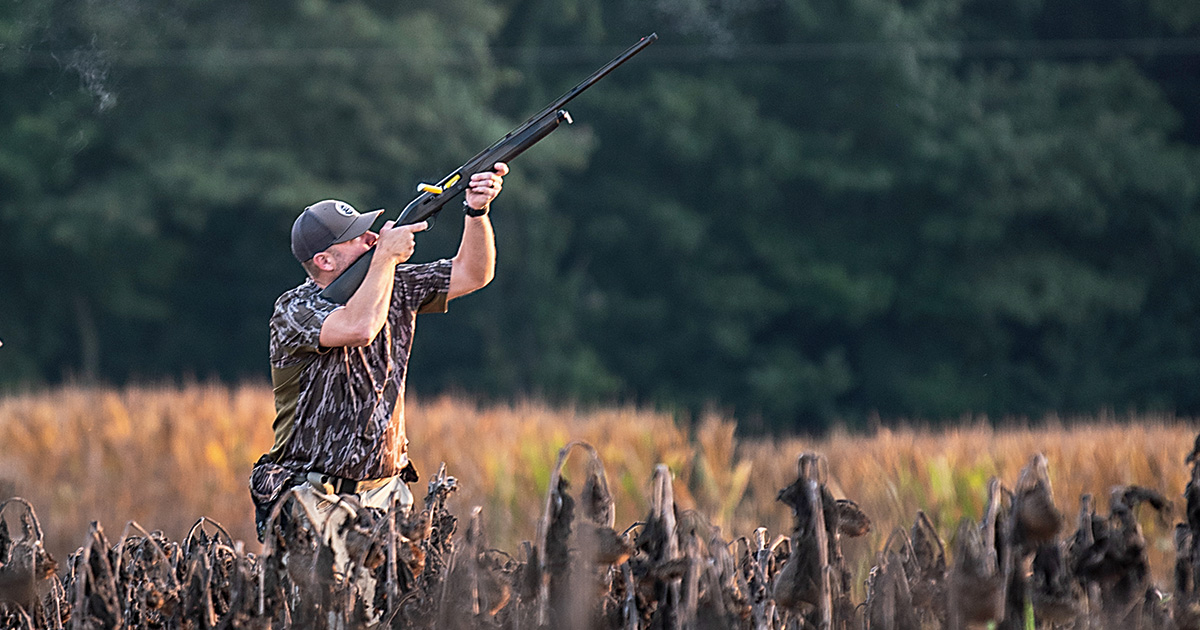Waterfowler's Journal: Dreaming of Doves
Is there a better way to kick off hunting season?
Is there a better way to kick off hunting season?


It’s the day before the dove season opener, and we’re discussing food and the weather while relaxing in Ray’s screened-in porch. What we aren’t discussing are the sunflowers out back or the doves we hope to shoot. It’s almost as if we’re afraid that talking about doves too soon would be rude, like a kid at a birthday party asking to open his gifts before everyone is done eating pizza.
Finally, my 10-year-old son breaks decorum to ask if he can go into the field to see what flushes up. Soon he’s walking purposefully through the brown stalks while doves boil up at his feet. Ray’s field is small, but there are always enough birds to heat up your shotgun. Being in that dove field is a tradition for us, and we start dreaming about it around the end of duck season.
According to the US Fish and Wildlife Service, mourning doves are the most-hunted migratory game birds in North America, and hunting seasons are available in most states. September 1 is the traditional opening day. It’s not technically the beginning of fall, but it might as well be.
There is simply no better spot to hone your shooting skills. Doves are typically plentiful, and they are small, fast, and notoriously acrobatic—some of the toughest targets in all of wingshooting. A dove field can humble even the best shotgunners, but the challenge is part of the fun.
Planting a dove field is an immense amount of work, requiring land, time, and equipment. It’s also expensive. Keep that in mind if you get invited to a private field. It’s good form to offer a donation to help offset the cost of seed and fertilizer. If that’s not accepted, at least bring something to share at the traditional post-hunt meal.
Some of the best dove hunts I’ve ever experienced have been on public fields. Many state agencies offer dove hunting on wildlife management areas or leased private lands. It pays to scout these fields well in advance of opening day. Some are only open for a portion of the season, and not always on the same days. And fields are frequently rotated from one year to the next.
Location matters in a dove field, whether it’s public or private. When you arrive, spend a few minutes watching the skies before rushing out to set up. Doves will often fly preferred routes over a field, and it’s not uncommon for hunters in a great spot to limit out before hunters in other spots shoot even a handful of shells. Don’t be shy about moving if doves are flying and you’re not shooting, but always keep safety and courtesy in mind. When I’m hunting with close buddies, we keep a 60-yard buffer between us. When hunting a public field, a minimum of 100 yards is a good idea. Keep your barrel pointed in the air, and don’t take shots at low-flying birds.
Doves aren’t as wary as ducks, but wearing camo and sitting near cover will help you get closer shots. Try to sit near a fencerow, field corner, or hay bale. Setting up near resting spots like power lines and large trees (especially dead ones) can provide some of the best shooting, as the birds often converge on these landmarks from all directions.
A spinning-wing dove decoy can be invaluable for grabbing the attention of passing birds. Don’t expect the birds to finish like ducks, but they will frequently swing in closer for a look. That can be a real asset on a larger field, especially if you’re not sitting right on the X. Just remember to pass up low birds that swoop in over the decoy if other hunters are in the vicinity.
What shotgun should you use? Your duck gun with light game loads will work just fine. I usually tote my 12-gauge with an improved cylinder choke and prefer 1 1/8-ounce loads of 7 1/2 shot. A dove field is also a great place to break out an older gun that you don’t shoot often, or your new sub-gauge if you’re looking for an added challenge.
Finally, remember to not take dove hunting too seriously. September is the kickoff to fall and the homestretch to duck season. Dreaming of doves helps the time pass quickly.
Ducks Unlimited uses cookies to enhance your browsing experience, optimize site functionality, analyze traffic, and deliver personalized advertising through third parties. By continuing to use this site, you agree to our use of cookies. View Privacy Policy